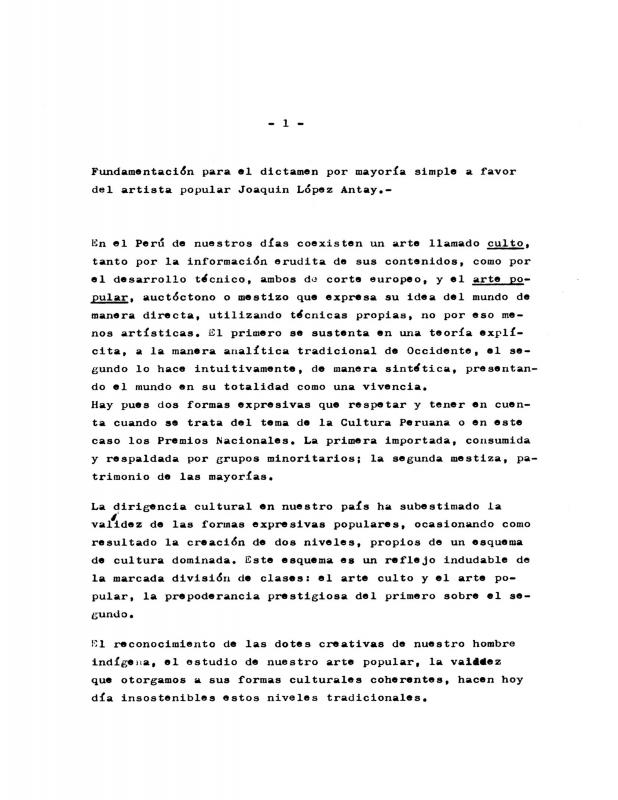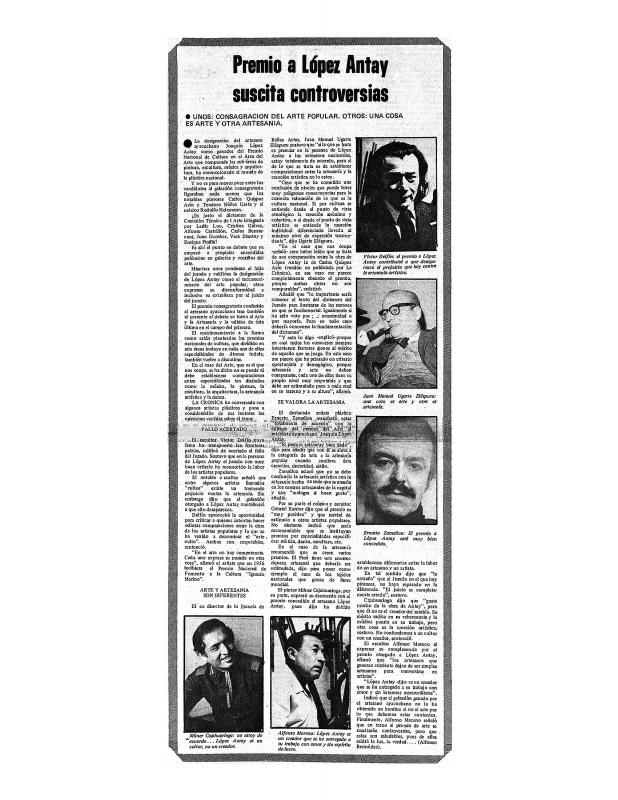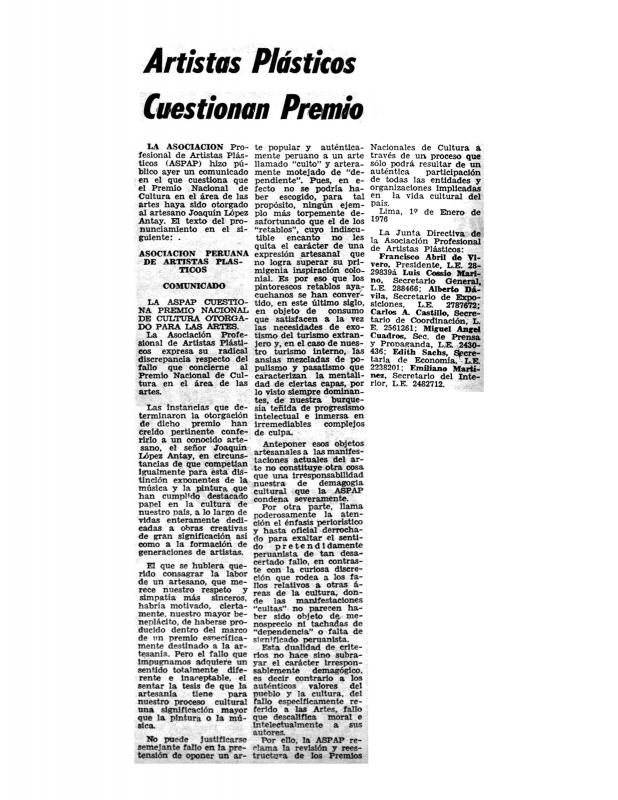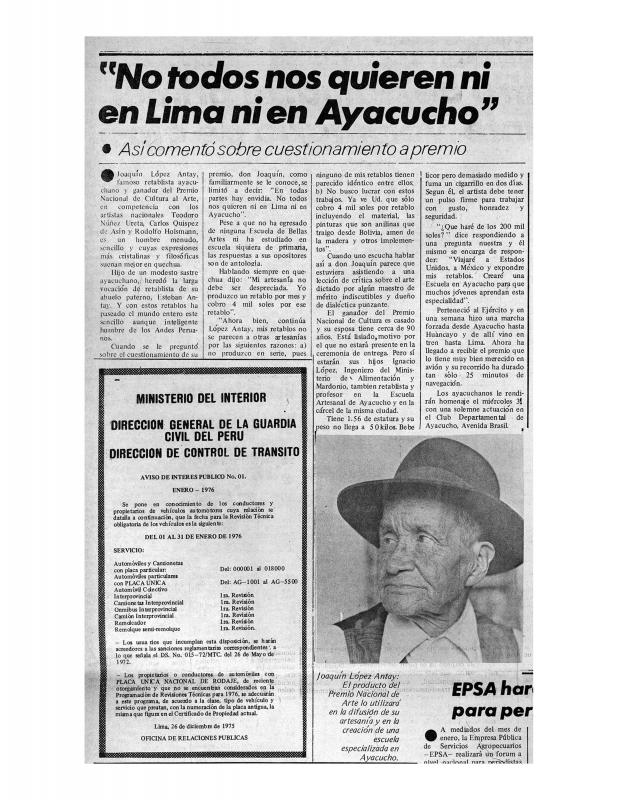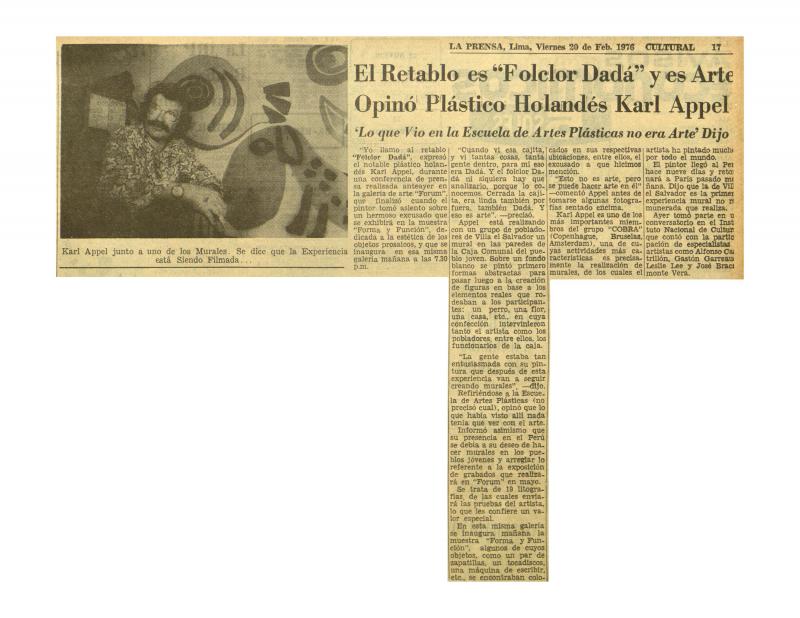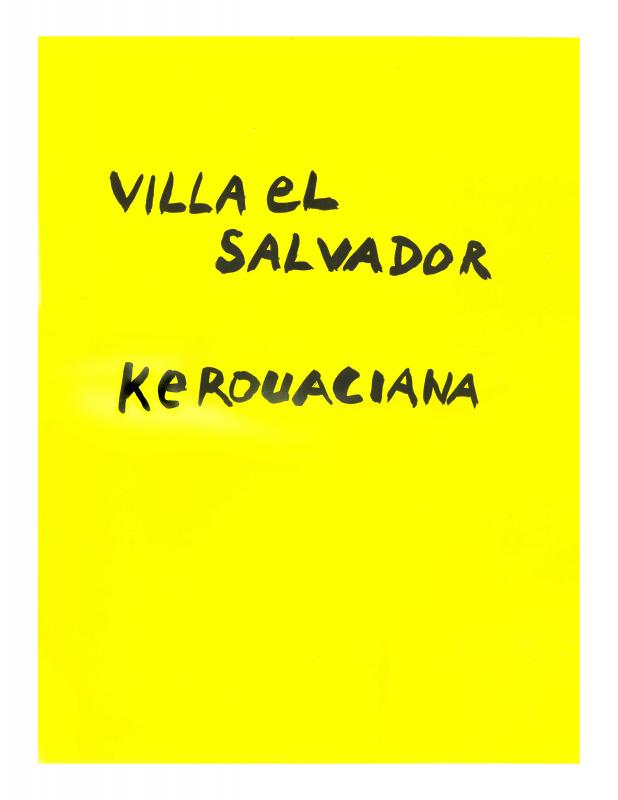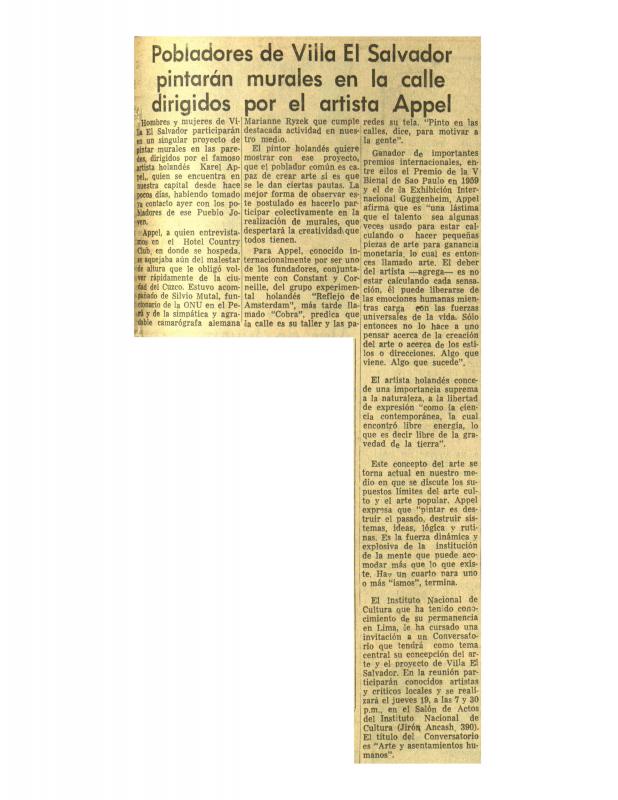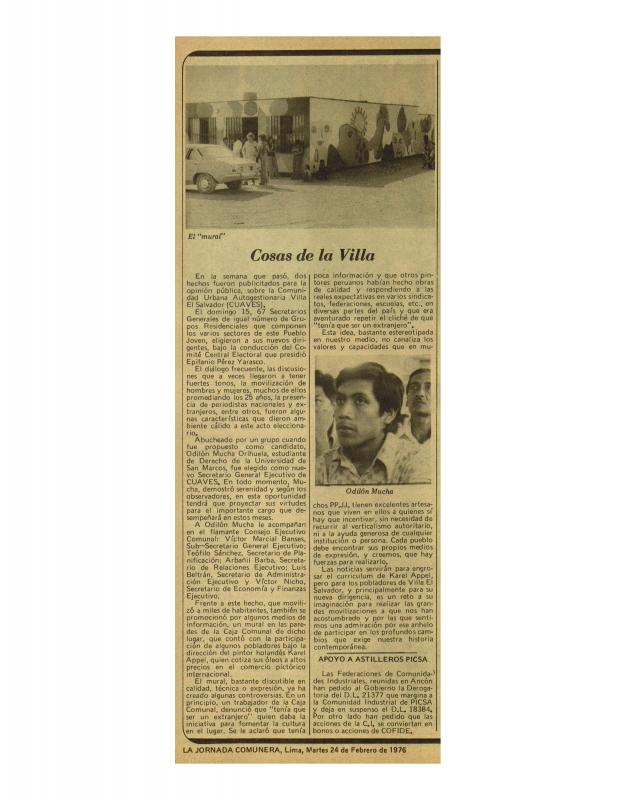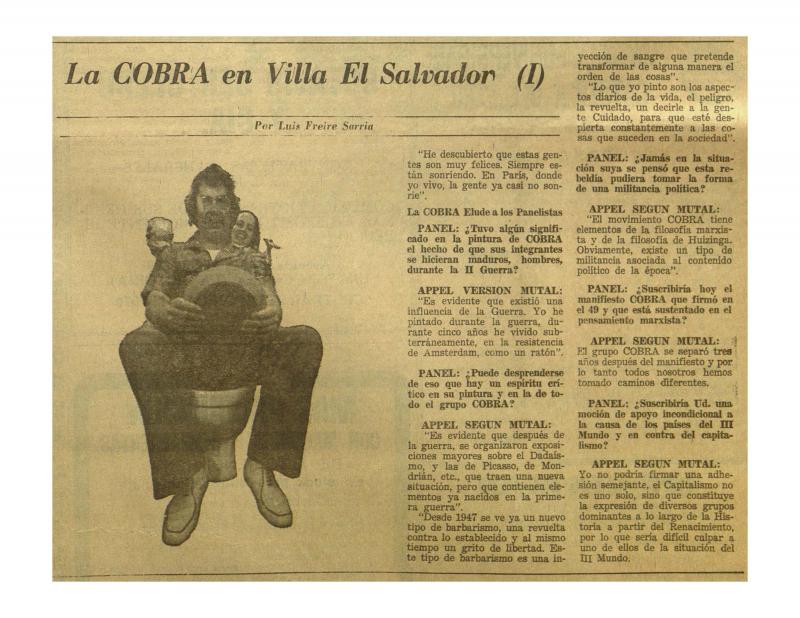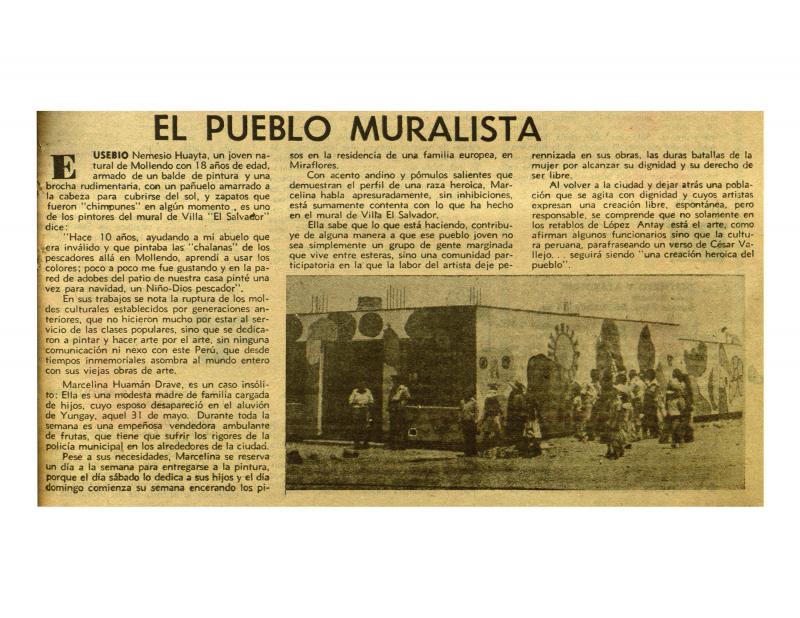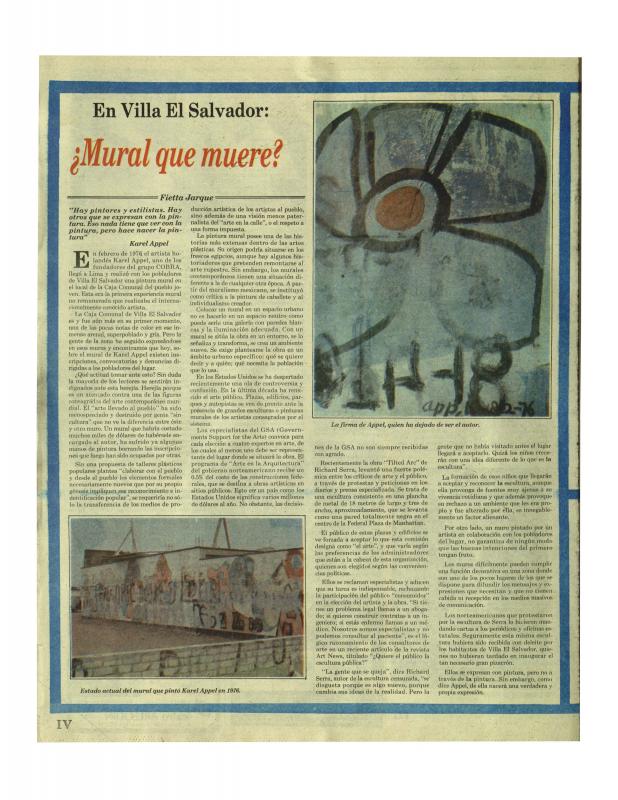Both the title of the conversation—“Arte y Asentamientos Humanos”—and the names of the participants underscore the fact that the art groups involved in this discussion were supporters of the radical wing of the military government then in power: the so-called “Revolución Peruana” (1968–80). When [Christiaan] Karel Appel (1921–2006) compared indigenous Andean retablos [altar pieces] to “Dada folklore,” his words carried particular weight because he uttered them during the fierce debate over the supposed boundaries between “fine art” and “popular art” that had erupted just a few weeks earlier when the Premio Nacional de Cultura was awarded to the artisan Joaquín López Antay, an apparent snub to Peru’s so-called “learned” visual artists. Appel calls Antay’s Andean retablos “Dada folklore,” comparing them to the “surreal-looking” boxes created by Guillaume Corneille (1922–201), Appel’s fellow-founder of the COBRA group [COpenhagen/BRussels/Amsterdam, 1948–51].
The artist Gastón Garreaud’s plan to continue the group mural project in Villa El Salvador did not come to fruition, and within a few years the original work had been destroyed. The painter’s recollections of that experience are recorded in Karel Appel: Street Art, Ceramics, Sculpture, Wood Reliefs, Tapestries, Murals, Villa El Salvador (New York: Abbeville Press in association with Cross River Press, 1985). [See in the ICAA digital archive (doc. no. 102138)].
[Regarding the Premio Nacional de Cultura, see the following documents in the ICAA digital archive: by Alfonso Castrillón, Leslie Lee, and Carlos Bernasconi “Fundamentación para el dictamen por mayoría simple a favor del artista popular Joaquín López Antay” (doc. no. 1135896); by Alfonso Bermúdez “Premio a López Antay suscita controversias. Unos: consagración del arte popular. Otros: una cosa es arte y otra artesanía” (doc. no. 1135879); by Francisco Abril de Vivero, Luis Cossío Marino, and Alberto Dávila “Artistas plásticos cuestionan premio” (doc. no. 1135960); and (unattributed) “‘No todos nos quieren ni en Lima ni en Ayacucho’: así comentó sobre cuestionamiento a premio” (doc. no. 1135930)].
[As complementary reading on Karel Appel, see the following articles in the archive: (unattributed) “El retablo es ‘Folclor Dadá’ y es arte, opinó plástico holandés Karel Appel: ‘lo que vio en la Escuela de Artes Plásticas no era arte’ dijo” (doc. no. 865535); by Appel “Villa El Salvador: Kerouaciana” (doc. no. 1052138); (unattributed) “Pobladores de Villa El Salvador pintarán murales en la calle dirigidos por el artista Appel” (doc. no. 865645); (unattributed) “Cosas de la Villa” (doc. no. 865627); by Luis Freire Sarria “La Cobra en Villa El Salvador (I)” (doc. no. 865607); (unattributed) “El pueblo muralista” (doc. no. 865664); and by Fietta Jarque “¿Mural que muere?: en Villa El Salvador” (doc. no. 865683)].

